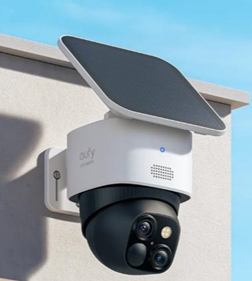Deloitte has released a report detailing the firm's findings on work productivity during the COVID-19 pandemic, stating there was actually a "spike in productivity" during the lockdown period that occurred in 2020. Whereas employers pre-pandemic found it tough to quantify a worker's output, the pandemic has ushered in a new era of setting measurable tasks for employees to complete that allows companies to measure the success of their workers.
SEE: Google Workspace vs. Microsoft 365: A side-by-side analysis w/checklist (TechRepublic Premium)
More for CXOs
The report's findings dig into the humanization of work during the pandemic, as hybrid and remote work setups have become a need rather than a luxury granted by employers. The most important way to do this is to create a digital space with the appropriate tools to get work completed while also having the ability to collaborate with colleagues in the workplace.
Like many companies, once Deloitte was forced to go fully remote the leadership team was not sure how the move would affect the productivity of their workforce.
"We felt like it was going to bring our industry to a screeching halt, and creativity and productivity would be stunted. We felt like it would be difficult to hire people if you couldn't sit across the table from them," said Paul Silverglate, vice chairman and U.S. technology sector leader at Deloitte. "I think one of the biggest breakthroughs was that flipping a switch and being virtual almost overnight worked. We feel like the pandemic for tech companies was kind of like a time machine that catapulted us tens of years into the future. We were pretty prepared for it from a work perspective, but we all thought you had to be physically together to be successful creatively right up until March of 2020 when you couldn't anymore."
Effectiveness, efficiency and empowerment

Deloitte has broken down the increase in productivity to three measurements, all beginning with E: Effectiveness, efficiency and empowerment. Each of these areas serves a key purpose in allowing employees to be successful in their roles and complete tasks in a timely manner.
SEE: Top keyboard shortcuts you need to know (free PDF) (TechRepublic)
Effectiveness, in this context, is measured by focusing on outcomes. Employers need to be able to explicitly state goals and objectives to their workforces so that workers can hit desired outcomes and key items in order to achieve those goals or complete objectives. With this point, the accomplishments and objectives become the desired result rather than hours worked or the amount of time spent doing a task.
Efficiency allows employees a space to work and the tools to do so as provided by the employer. Deloitte found that before the pandemic, collaborative workspaces were not being used to their full potential, but with many being forced to work remotely those tools ended up being a key factor in allowing workers to be successful. Reducing excessive emails and meetings is a hurdle that is still needing to be overcome, and doing so will allow employees to become more efficient with their time.
"I was surprised by the sustainability of the spike in productivity. Commuting is not an efficient use of your time. Sitting in a car in traffic isn't efficient, but if you can walk to your office and start working it allows you to be more productive," Silverglate said. "I think now we are seeing very purposeful moments when you want to be working together [in-person], rather than being together just for the sake of it or out of habit. We are now having to reinvent and recreate what things need to happen together live and what can be well done virtually."
Empowerment is an important factor in how work got done during the pandemic and several important lessons can be learned from the way companies approached giving employees more autonomy. As the workforce was granted a greater level of trust, productivity rose as a result. Many employees saw their desired work hours branch outside of the traditional 9-to-5 structure due to integrating work and life rather than having them set apart from one another. Digital collaborative workspaces also play into empowering workers, allowing them to conduct business from anywhere and entrusting them with the power to create their own hours along with giving them the tools they need to be successful.
Tech News You Can Use Newsletter
We deliver the top business tech news stories about the companies, the people, and the products revolutionizing the planet.Delivered Daily
Sign up today








